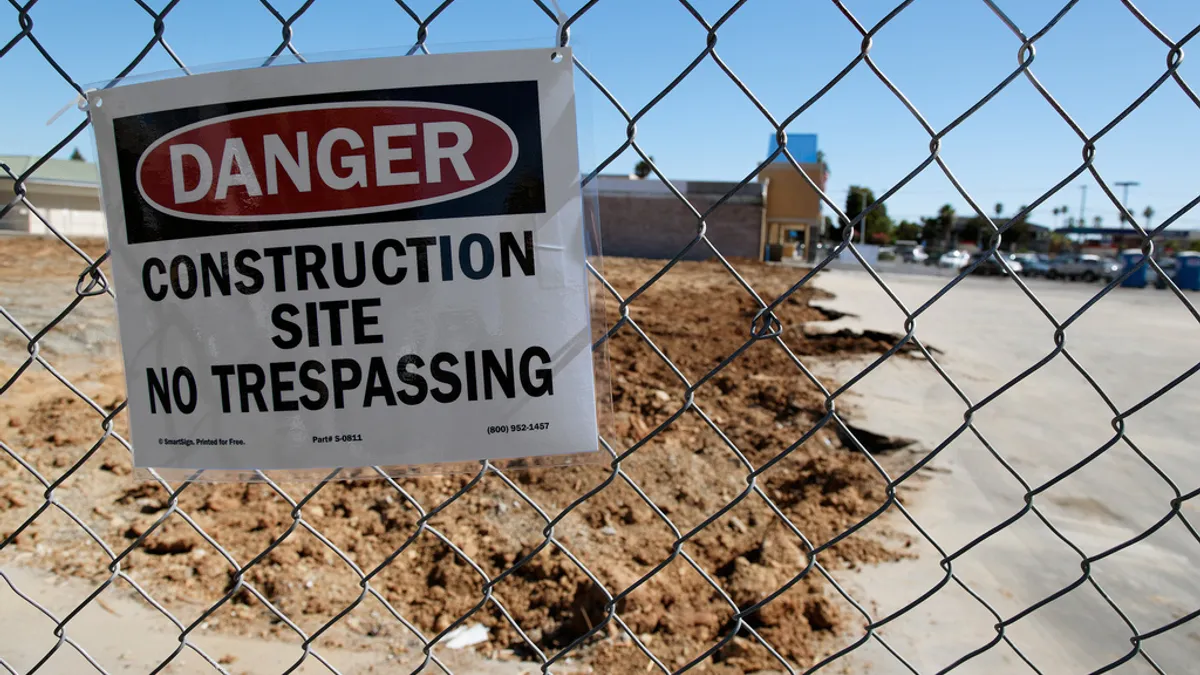Blair Koorsen is the business development manager at RBN Insurance Services and Jeff Greenhalgh is an insurance advisor at RBN Insurance Services. Opinions are the authors' own.
Insurance carriers view many construction companies and contracting businesses as high-hazard. After all, many construction workers and contractors are exposed to hazards, such as falling from rooftops, working with heavy machinery, being injured by construction equipment, electrocutions and exposure to silica dust and asbestos. And claims involving contractors can take years to work through because of the intricacies of contracts, indemnifications and allocating liability among different parties.
Although the commercial insurance market is in a hard cycle right now and insurance premiums are on the rise for most lines of coverage, one line of coverage that can offset increasing insurance costs for some organizations is workers' compensation insurance. Securing favorable workers’ comp rates can help mitigate the costs of other lines of commercial insurance.
One step that organizations can take to improve their workers' compensation risk profile is to have a documented safety program that includes proactive processes to help employers find and fix workplace hazards before workers are hurt.
There are numerous benefits of having a documented safety program in addition to potential insurance savings. Documented safety programs are a recruiting advantage when looking for skilled labor in a highly competitive market. Furthermore, proper safety programs can reduce injuries and claims costs. Equally important, safety programs can lead to a more productive and engaged workforce, resulting in fewer project delays and less lost working time.
OSHA estimates that the implementation of injury and illness prevention programs will reduce injuries by 15% to 35% for employers who do not currently have safety and health programs. Employers with existing safety programs should review them regularly to ensure they are adequately protecting workers and correctly documented. By following the guidance and basic principles below, employers can start the process of implementing or improving their documented safety programs and potentially lower their insurance costs.
Getting started
When implementing a new safety program or reviewing one already in place, employers should consult applicable OSHA and other state-specific standards for their specific workforce. In fact, 34 U.S. states have laws or regulations designed to require or encourage injury and illness prevention programs, including 15 states with mandatory regulations for all or some employers. Safety programs can fit within any budget and within any organization’s culture.
Employers should thoroughly document all aspects of their safety program so it can be shared with new employees, their insurance carrier and, as required in some cases, OSHA or other regulatory agencies. In addition to documenting their policies, employers should keep records of all meetings, investigations, and reports. Below are some important elements of a successful safety program:
Leadership involvement: All safety programs should start from the top with leadership’s commitment to safety and risk management. Leadership should establish safety goals for the organization. After identifying goals, leaders should identify the individuals who are accountable for implementing and maintaining programs. Leadership should support this goal by ensuring the organization has all the resources and professional support it needs to conduct a strong safety program.
Worker participation: Safety programs need to have a commitment from all workers. Leadership should seek feedback from workers and include their valuable insights in the process.
Hazard identification and assessment: After leadership identifies goals and seeks insights from workers, employers should identify and assess workplace hazards. Employers can gather this information by soliciting worker feedback, completing workplace inspections, reviewing available information on hazards, and investigating any reported injuries or illnesses to identify any workplace hazards.
Hazard prevention: After workplace hazards are identified and assessed, employers should create a plan to prioritize and control the identified hazards. Employers should put in place interim controls to protect workers from hazards that cannot be addressed immediately. After all hazard controls have been put in place, employers should verify all controls measures have been implemented correctly and are working properly.
Education and training: A crucial part of controlling risk is educating and training workers. Education and training workers should be an ongoing process. To ensure comprehension, provide education and training in a language or languages understandable to all workers. OSHA provides materials in many languages, and these materials can easily be found on their website. Education and training provided to workers should include: procedures for reporting injuries and concerns, recognizing hazards, ways to control hazards, elements of the program or programs, and how workers can participate in the program or programs.
Program evaluation and continual improvement: Leadership should review safety programs regularly to determine the effectiveness and needed improvements. Modifications should be made when improvements are needed, new regulations are identified, or new hazards exist.
Documented safety programs can help insurance carriers view your organization more favorably. Rely on your insurance and risk management advisors to help your organization develop proactive safety programs. Your advisors can also help with compliance with OSHA, DOT, state, and local regulations.
Most importantly, make sure to partner with an insurance and risk management professional who understands your business and its unique risks and will advocate on your behalf.




















